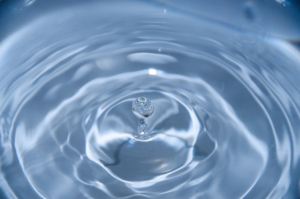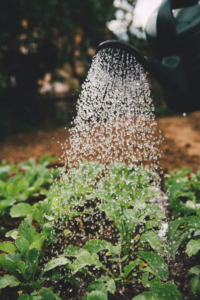Harvesting Rainwater: How Do I?
In a world increasingly focused on sustainable practices, the technique of harvesting rainwater has re-emerged as an eco-friendly water solution. This article delves into the art of collecting rainwater, exploring not only the benefits but also the reasons why individuals should embrace this age-old practice to foster sustainability at home.
The Essence of Harvesting Rainwater:
Why Collect Rainwater?
- Sustainable Water Source:
- Rainwater harvesting provides a sustainable and natural water source, reducing your reliance on traditional water supplies and contributing to long-term water conservation efforts.
- Currently much of Canada is in a drought, and with a 2023-2024 mild/dry winter, my hunch is that we will have a very dry summer which could include water use restrictions.
- Cost-Effective Water Supply:
- Harnessing rainwater is a cost-effective alternative to relying solely on municipal water sources. Once the initial setup is complete, rainwater is essentially free, leading to potential savings on water bills.
- Reduction of Runoff and Erosion:
- Collecting rainwater helps mitigate soil erosion and reduces stormwater runoff. By directing rain into storage systems, you minimize the impact of heavy rainfall on the soil, preventing loss of topsoil and potential flooding.
- Landscape Nourishment:
- Rainwater is naturally soft and devoid of the minerals and chemicals found in treated water supplies. Using collected rainwater for irrigation nourishes plants with a purer water source, promoting healthier growth and minimizing the environmental impact of conventional irrigation practices.
How to Collect Rainwater:
- Install a Rain Barrel
- Place rain barrels beneath downspouts to catch and store rainwater. Ensure the barrel has a tight-fitting lid to prevent debris, bugs, and algae from contaminating the water.
- Connect to Gutters and Downspouts:
- Direct water from your roof into the rain barrel by connecting it to gutters and downspouts, ensuring efficient collection during rainfall.
- Filter Debris:
- Use mesh screens or filters at the entry point of gutters to prevent leaves and other debris from entering the rainwater collection system.
- Implement Larger Storage Systems:
- If space permits, for more extensive rainwater harvesting, consider installing larger cisterns or tanks. These systems allow for increased storage capacity and can be integrated into landscaping or hidden underground.
Environmental Impact: Navigating the Path to Sustainability
- Environmental Benefits:
- Rainwater harvesting significantly reduces the demand on local water supplies, especially during dry seasons. This conservation effort helps maintain aquatic ecosystems and preserves water for future generations.
- Local Regulations and Incentives:
- Check local regulations and incentives related to rainwater harvesting. Some areas may offer incentives or rebates for installing rainwater collection systems, while others may have specific guidelines to follow.
- Community Awareness:
- Raise awareness within your community about the benefits of rainwater harvesting. Collaborate with local organizations and authorities to promote sustainable water practices and share knowledge about the positive environmental impact.
Why You Should Collect Rainwater:
- Self-Sufficiency:
- Collecting rainwater promotes a sense of self-sufficiency, allowing you to rely less on external water sources and fostering a more resilient living environment.
- Environmental Responsibility:
- Embracing rainwater harvesting reflects a commitment to environmental responsibility. By using a natural resource, you actively participate in reducing the strain on water ecosystems and contribute to a more sustainable future.
- Cost Savings:
- Beyond the initial setup, rainwater is essentially free. Collecting and using rainwater can lead to significant savings on water bills, making it a financially wise and eco-friendly choice.
- Landscape Health:
- Rainwater, free from the chemicals found in treated water, is an excellent source for nourishing your garden and landscape. Plants thrive on the purity of rain, leading to healthier, more vibrant greenery.
Conclusion:
Embracing the art of rainwater harvesting is not only a practical step towards sustainability but a transformative act that connects individuals to the natural rhythm of the environment. By collecting rainwater, we contribute to the preservation of water resources, reduce our ecological footprint, and actively participate in building a more resilient and environmentally conscious community. In the simple act of collecting raindrops, we nurture a sustainable future—one drop at a time.





